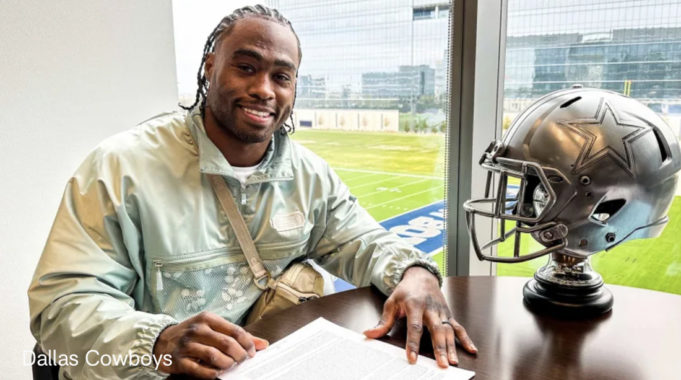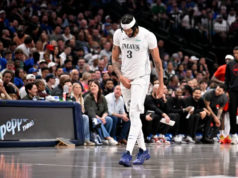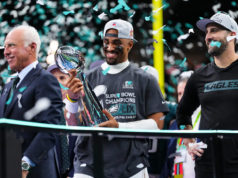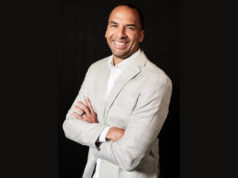I’m not breaking any news here. We’re all aware of it. Even the most casual Cowboys fan could probably recite the glaring fact that Dallas — a once peerless and storied franchise — has not made it to even an NFC Championship game, much less a Super Bowl, in nearly three decades. A person born in the same year that a Lombardi Trophy was last hoisted in these parts would now likely have graduated college, earned a coveted car insurance discount, and be looking to purchase their first home. Just kidding. No one currently under the age of 50 will ever own a home in America again.
In the true Jerry Jones Era — in other words, these 30-some-odd years A.J. (see: After Jimmy) — the term “mediocrity” has become synonymous with Cowboy football. They’re normally a pretty good team. That is, good not great. They’ll usually win more games than they’ll lose and make the playoffs every other year or so, but we all know what happens once they get there.
The club’s tenuous success, or the lack thereof, in the last quarter century is a testament to their team-building strategy. Or again, the potential lack thereof. That is to say, there seems to be no consistent or cohesive strategy at all. I will couch the previous statement a bit by unconditionally praising the way the team has approached the draft for the last 10 years or so. The credit for that, however, belongs mainly to GM-in-all-but-name Will McClay, the Cowboys’ director of player personnel. He’s the one scouting football talent while the team’s actual general manager, Mr. Jerral Wayne Jones, is doing more important things like closing marketing deals with cryptocurrency startups and doling out hush money to previously undisclosed fun babies. Overall, the Cowboys draft pretty dang well. It’s in free agency where they can’t seem to find an identity.
In this regard, it’s the nature of the Cowboys’ front office to appear directionless and reactionary. Here, there simply seems to be no compass. No North Star. No guiding principle. The best predictor of how the Joneses will approach a free agency period in one offseason is to look at the prior one — not because they will repeat the strategy previously employed, like consistent-year-to-year franchises such as Baltimore, Pittsburgh, and New England do, but because they will unfailingly do the complete opposite thing they did the year before.
It could be argued that if there is a consistent approach, it is that they want to retain their own guys, draft, and re-sign — such as they have done this offseason with safety Donovan Wilson and linebacker Leighton Vander Esch. McClay is also fairly adept at bargain shopping in free agency and occasionally landing budget players on one-year deals, if only to plug obvious holes, allowing the team more freedom on draft day. The signing this week of running back Ronald Jones is one such example. But big-name free agents? Forget about it. The ghost of Brandon Carr haunts this front office to this day. But how effectively do they manage re-signing their homegrown talent? In a word, horrendously.
One year will see them shower undeserving players with limitless piles of cash (e.g., the Ezekiel Elliott and Jaylon Smith contracts) only to see them try to play hardball with the players they actually probably should lock up because Jurrah et al. are suddenly frugal because the foolish deals have forced them up against the cap. But then, because they’ll panic at the thought of losing them, the front office will ultimately fold once the negotiating player, who has all the leverage, mind you, has successfully driven the price up. Such as when a potential $25M/year Dak Prescott became a $40M/year QB or when a $12M Demarcus Lawrence suddenly became $20M D-Law after the Joneses “stuck to their guns” for a season or two. Ridiculous. Don’t want to pay Amari Cooper $20M, but somehow a one-legged Michael Gallup is worth $14M?
This year, they finally got wise and cut bait with the aforementioned Elliott, who despite reportedly being an irreplaceable leader, a great locker room guy, and a face of the franchise, has underperformed that mega contract since signing it three years ago. You just can’t pay a running back $12M a year. Right? Well, in the same breath they willfully placed the franchise tag on Tony Pollard — who, though he led the league in yards per touch this past year, is also recovering from his own major injury — with a staggering sticker price of $10M to boot. Sounds like the Gallup signing all over again.
It’s this rigid stick with our own “philosophy” that makes the moves the Cowboys have made over the last two weeks all the more incredible. While not necessarily dropping serious cash on outside players, Jerral and the ’Boys have managed to snag a few known commodities. And some with tread still left on the tires. The fifth- and sixth-round picks flipped for former Defensive Player of the Year, cornerback Stephon Gillmore, and six-time 1,000-yard receiver Brandin Cooks fill major needs without handcuffing the franchise salary cap-wise. Considering the organization’s trade record — giving a first-round pick for Amari Cooper only to flip him for a fifth just three years later — that’s some uncharacteristically savvy horsetrading.
Does it point to Jerry finally learning from the mistakes he’s been making for the entirety of the 21st century? That remains to be seen. Give him credit, though. The team is significantly better now than it was two weeks ago. And the draft is just a month away, which will allow them to use their aforementioned draft acumen to improve even more. That is, until next year after they again fail to make an NFC Championship game and they blow the whole thing up and do something completely different again.












